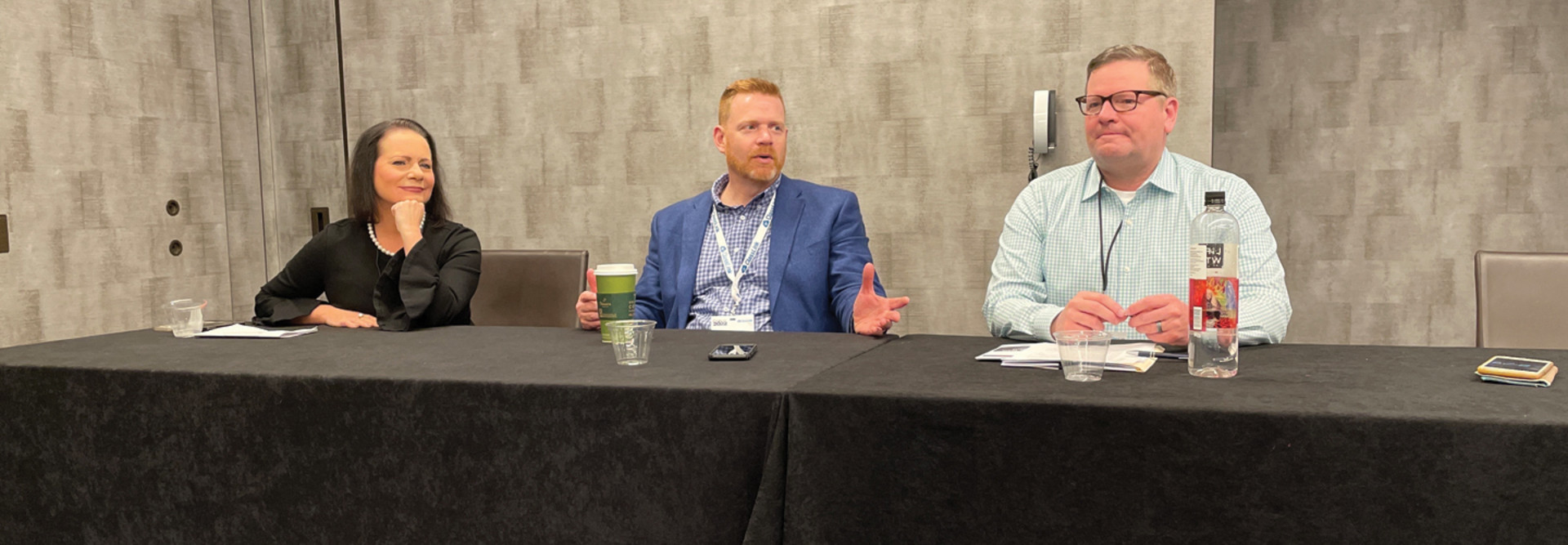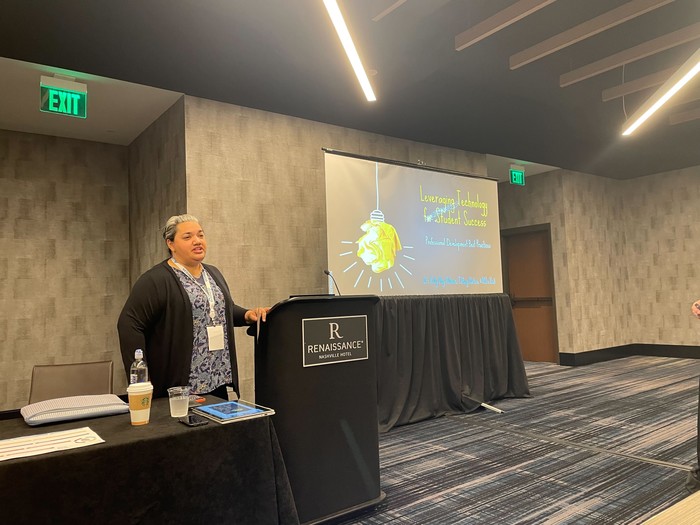Tiffany Norton, chief innovation and information officer at Desert Sands Unified School District, speaks at CoSN2022.
She and colleague Mike Kint, Desert Sands USD’s director of professional development, explained how their district worked through pandemic-era challenges. They noted that blended learning and universal design for learning (UDL) resources are more available for educators and school districts than ever and said their district has been working collaboratively to provide the best education for all students.
KEEP READING: Schools ace professional development for tech transformation.
Increased Collaboration Leads to Successful Tech Implementation
Collaboration and unified teams were also topics of discussion in a Tuesday session moderated by Ann McMullan, CoSN’s project director of the EmpowerED Superintendents Initiative.
“Sadly, the silo is pervasive across all of our systems to some degree, and as superintendents, part of our job is to actively work to dismantle that,” said Susan Enfield, superintendent of Highline Public Schools in Washington State.
Enfield was joined by Superintendent Matthew Miller of Lakota Local School District in Ohio and Superintendent David Schuler of High School District 214 in Illinois in the session “Building and Leading a Collaborative Team to Drive Technology Implementations.”
The three discussed how digital transformation begins by breaking down district silos, particularly between the superintendent and the CTO, and — on a larger scale — the curriculum teams and technology teams.
WATCH NOW: IT leaders use instructional backgrounds to implement tech.
They also talked about the importance of having the school board’s support. “Keeping your board engaged in the work and aware of the work is really important,” Enfield said. Beyond that, having a trusted cabinet in place is crucial, Schuler added, so you can schedule regular meetings between your team and the board to build trust and relationships.
At High School District 214, Schuler shows videos of the district’s successes or positive work at the start of board meetings. “That’s been a cool way to get our board to really buy in to what we’re doing and make them feel really good about it,” he said.
Districts Shift Out of Emergency Mode to Plan for the Future
The district leaders in Tuesday’s sessions spoke about planning for the future.
“We have a virtual school that started in July,” Norton said. “We ordered 50 devices for the virtual school.” With 20 students initially enrolled, the team at Desert Sands USD felt confident in its purchase, thinking that extra devices could be kept on hand for the students and help the team continue to learn virtually.
“The virtual school is sitting at about 400 kids right now,” she shared. “It just ballooned.”
Norton also added that the district will continue to use and refine the resources and processes learned as part of the pandemic.













